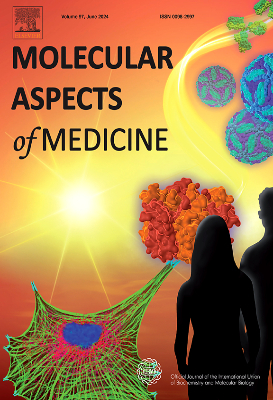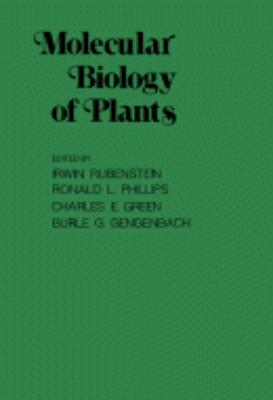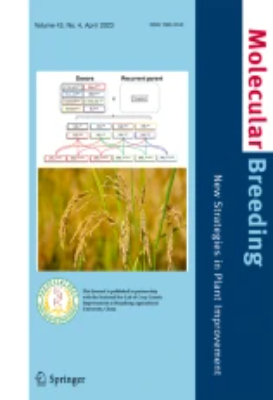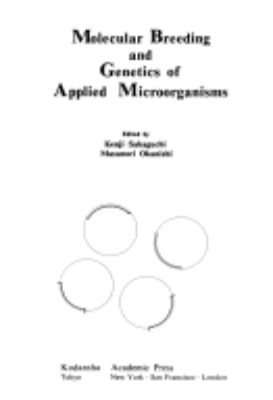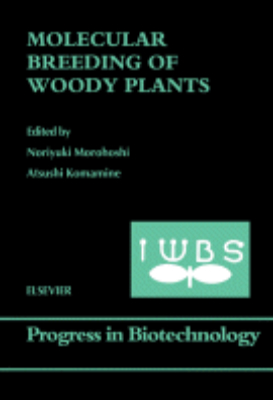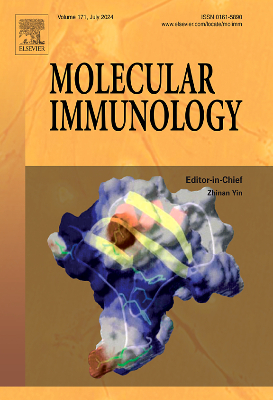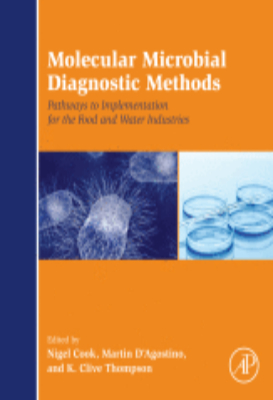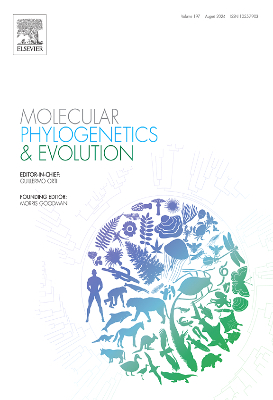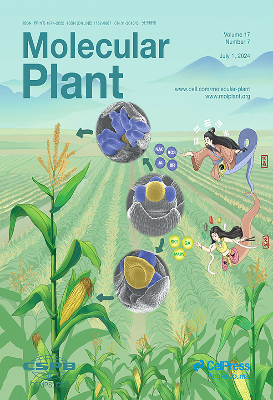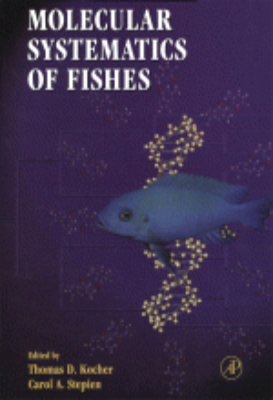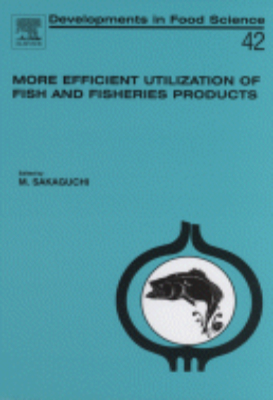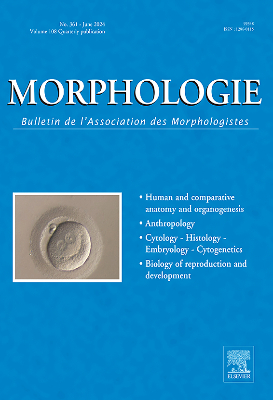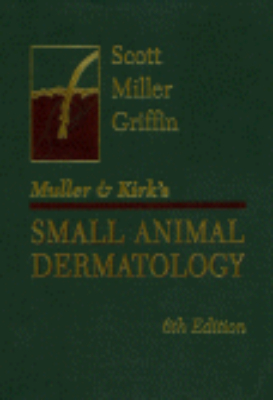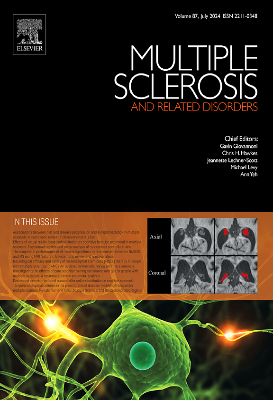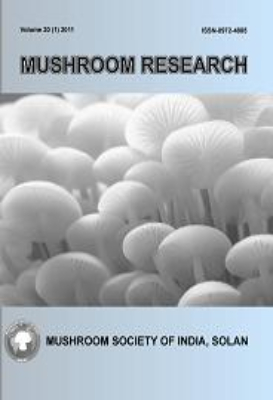E-Resources
Molecular Biology of Plant Nuclear Genes
Cell Culture and Somatic Cell Genetics of Plants, Volume 6: Molecular Biology of Plant Nuclear Genes focuses on the spectacular and rapid advances in the molecular biology and genetics of plants. This book consists of 19 chapters. Chapters 1 to 5 describe the most commonly used approaches for the genetic transformation of plants. The light-inducible and tissue-organ-specific genes are discussed in Chapters 6 to 11. In Chapters 12 to 14, the genes regulating phytohormone synthesis, heat shock proteins, and nodulation in legume roots are treated, while in Chapters 15 to 16, the relationship between chromatin structure and gene expression and molecular biology of plant RNA viruses are analyzed. The development of transgenic plants resistant to viruses, insects, and herbicides is dealt with in the last three chapters. This volume is suitable for plant molecular biologist, genetic engineers, and researchers concerned with plant cell and tissue culture.
Molecular Biology of Plant Tumors
Molecular Biology of Plant Tumors provides an opportunity to learn in detail about the latest insights into the mechanism of transformation of plant cells by Agrobacterium tumefaciens. The study of the molecular mechanism responsible for the crown gall phenomenon (induced by Agrobacterium tumefaciens) illustrates the point that the fundamental study of the cause(s) and mechanism(s) of abnormal growth might be one of the most efficient ways to understand cellular differentiation and the molecular basis of gene expression. The book is organized into three parts that contain research on abnormal plant growth, crown gall tumors, and potential vectors for genetic engineering in agriculture. The genetic structure responsible for the neoplasmic transformation of plant cells in crown galls is a bacterial plasmid (called Ti for tumor-inducing). Research described in this volume demonstrates that these Ti plasmids were designed by evolution as natural gene vectors with which some bacteria can introduce active genes into plants. These transferred genes are maintained by integration in the plant genome and their expression is directly or indirectly responsible for the tumorous growth pattern.
Molecular Biology of Plants
Molecular Biology of Plants presents the formal scientific presentations delivered on the symposium on plant molecular biology, held at the University of Minnesota in 1976. The topics in this book are organized around the central dogma of molecular biology. Section I describes the organization and replication of DNA in plant chromosomes, including chloroplast genomes; Section II discusses molecular aspects of transcription and translation, ribosomal RNA gene systems and hormonal control of protein synthesis. Section III examines plant viruses and bacterial agents, in particular the crown gall system, viroids, and the replication of plant RNA viruses. Each of these specific topics contributes to an integrated knowledge of plant molecular biology. The book will be of interest to geneticists, cell biologists, plant breeders, plant physiologists, plant pathologists, and biochemists.
Molecular Breeding and Genetics of Applied Microorganisms
Molecular Breeding and Genetics of Applied Microorganisms provides expert reviews on the developments in the field of applied microbiology in Japan. The book presents areas where further progress in applied microbiology is possible. Articles on these possibilities such as the use of recombinant DNA techniques to link fragments of DNA from unrelated organisms; creation of new strains of microorganisms to control pollution; construction of a ""biological battery"" using a photosynthetic system; and breeding of plant species tolerant to various plant diseases are explored in detail. Microbiologists, biologists, geneticists, biochemists, pharmacologists, and researchers will find the book insightful.
Molecular Genetics
Molecular Genetics, Part III: Chromosome Structure explores the structure and modification of DNA, chromatin, and higher order organization and possible subunits of chromosomes at the molecular level. It describes major changes in concepts of chromatin structure and packaging of DNA based on studies of nuclease digests and electron micrographs; the role of restriction endonucleases in molecular genetics; the involvement of DNA topoisomerases in concerted breaking and rejoining of DNA backbone bonds; enzymatic methylation of DNA; and transcriptional units in eukaryotic chromosomes. Organized into seven chapters, this volume begins with an overview of the general properties of type I and type II restriction enzymes, basic aspects of restriction enzyme technology, and applications of restriction enzyme technology to the study of chromosome structure and function. It then discusses recombinant DNA technology; possible biological roles of DNA topoisomerases; recognition and control sequences in nucleic acids; composition and substructure of nucleosomes; analysis of chromosome fibers by electron microscopy; organization of fibers into chromosomes; and functional aspects of organization of chromosome fibers. Molecular biologists, geneticists, scientists, and electron microscopists will find this book extremely helpful.
Molecular Genetics of Sex Determination
In this era of accelerated discovery and prolific output, Molecular Genetics of Sex Determination keeps readers abreast of this fields fast-moving biology. Its chapters were completed by experts in eacharea only months before publication. The text is organized into two parts. First, it reviews the basic biology of sex determination and summarizes ground-breaking work in mouse, marsupial, and Drosophila systems. Second, it covers current human genetics, clinical studies, and the syndromes of abnormal sex differentiation. With chapters by preeminent reproductive biologists, this is a capital work. Ohno's law is described by Ohno; the Lyon hypothesis, by Lyon; Sinclair tells how he cloned the testis-determining gene; and so on. Molecular Genetics of Sex Determination is authoritative, comprehensive, and current. It is prime reading for geneticists, developmental biologists, graduate students in these and related fields, clinical researchers, physicians, and medical students.
Molecular Genetics: 2000
Molecular Genetics, Part II covers the significant developments in various areas of molecular genetics. This book is composed of 10 chapters that also consider the gene expression and regulation of some enzymes. The opening chapters deal with the mechanisms of nucleic acid replication and repair, as well as the structural aspects of the genetic apparatus of viruses and cells. The next chapters explore the patterns and mechanisms of genetic recombination, the in vitro and in vivo experiments to delineate the genetic code, and the initiation of peptide chains in Escherichia coli. These topics are followed by discussions of the mechanism of DNA-dependent RNA synthesis, the regulation of enzyme synthesis in microorganisms, and the regulation of viral replication. The final chapters consider the theoretical and practical aspects of the metabolic regulation in metazoan system and the procedures for the study of DNA-DNA and DNA-RNA interactions. This book will be of great value to molecular geneticists, biochemists, and researchers.
Molecular Microbial Diagnostic Methods
"Molecular Microbial Diagnostic Methods: Pathways to Implementation for the Food and Water Industry was developed by recognized and experienced highlevel scientists. Its a comprehensive and detailed reference that uncovers industry needs for the use of molecular methods by providing a brief history of water and food analysis for the pathogens of concern. It also describes the potential impact of current and cutting-edge molecular methods. This book discusses the advantages of the implementation of molecular methods, describes information on when and how to use specific methods, and presents why one should utilize them for pathogen detection in the routine laboratory. The content is also pertinent for anyone carrying out microbiological analysis at the research level, and for scientists developing methods, as it focuses on the requirements of end-users. Key Features. Includes information on how to introduce and implement molecular methods for routine monitoring in food and water laboratories. Discusses the importance of robust validation of molecular methods as alternatives to existing standard methods to help ensure the production of defendable results. Highlights potential issues with respect to successful implementation of these methods"
Molecular Systematics of Fishes
"Sequenced biological macromolecules have revitalized systematic studies of evolutionary history. Molecular Systematics of Fishes is the first authoritative overview of the theory and application of these sequencing data to fishes. This volume explores the phylogeny of fishes at multiple taxonomic levels, uses methods of analysis of molecular data that apply both within and between fish populations, and employs molecule-based phylogenies to address broader questions of evolution. Targeted readers include ichthyologists, marine scientists, and all students, faculty, and researchers interested in fish evolution and ecology and vertebrate systematics. Key Features. Focuses on the phylogeny and evolutionary biology of fishes. Contains phylogenies of fishes at multiple taxonomic levels. Applies molecule-based phylogenies to broader questions of evolution. Includes methods for critique of analysis of molecular data"
Molecular Wine Microbiology
"Molecular Wine Microbiology features rigorous scientific content written at a level comprehensible for wine professionals as well as advanced students. It includes information on production and spoilage issues, the microbial groups relevant for wine production and microbial wine safety. Microbiology has long been recognized as a key tool in studying wine production, however only recently have wine microbiology studies been addressed at a molecular level, increasing the understanding of how microbiology impacts not only the flavor quality of the wine, but also its safety. Understanding, at a molecular level, how a starter culture can impact ethanol, glycerol, volatile phenols, mannoproteins, biogenic amines or ochratoxin A of a wine are just some of the core points that must be considered in order to achieve maximium consumer acceptability while addressing safety concerns during processing and storage. While other books offer insights into the technological aspects of enology, this book is written by expert microbiologists, who explore the positive and negative impacts of gene function in the production of wine, from a microbiological point of view. Key Features. Winner of the 2012 Jury Award in Enology from the International Organisation of Vine and Wine. Presents the most current methods of studying the microbiology of wine. Includes latest identification and typing methods, reducing identification time from days and weeks to minutes and hours. Provides important knowledge about the impact of microbiological factors at the molecular level for reduction of wine spoilage and increased wine quality and safety"
Muller & Kirk’s Small Animal Dermatology
Fully revised and updated, Muller & Kirk's Small Animal Dermatologyprovides students and veterinarians the most complete, up-to-date and user-friendly textbook of dermatology for dogs, cats, and pocket pets. This popular resource thoroughly details everything concerning etiology, pathogenesis, clinical signs, diagnosis, and therapy. Lavishly illustrated with clinical, microscopic and histopathological materials, it features over 1200 illustrations.
Muscle and Meat Biochemistry
Muscle and Meat Biochemistry teaches the different concepts and topics under the eponymous subject. The book covers the gross and detailed composition and structure of muscles and the relationship of the nervous system with the muscular system; muscle cell differentiation and growth; proteins of the thick filament; and the molecular structure and enzymatic activity of myosin. The text also discusses the proteins found in the thin filament - actin, troponin, and myosin; skeletal muscle growth; protein metabolism; and fiber types. The book also encompasses cardiac and smooth muscle; sarcoplasmic proteins; the connective tissues - collagen, elastin, and ground substance; and the postmortem changes during conversion of muscle to meat. The text is recommended for advanced undergraduate and graduate students, as well as for scientists who would like to know more about muscle biology, muscle physiology, and meat science.
Mushroom Research
Focus and Scope Mushroom Research, the official publication of the Mushroom Society of India is a bi-annual journal. It publishes full papers and short communications reporting original research, basic and applied, which contribute significantly to the knowledge of the mushroom science and industry. Mini-reviews (with prior consent or invitation only) and articles of practical/technical importance will be published. News and views, and book reviews will also be considered. The author (s) should be the members of the Society. Peer Review Process The journal Mushroom Research is a double blind peer reviewed, refereed biannual international journal that provides rapid publication of articles in all areas related to mushroom sciences. The journal welcomes publications of high quality papers. Normally this double blind review system takes 2-3 months. Publication Frequency Bianually in July and December. Open Access Policy This journal provides immediate open access to its content on the principle that making research freely available to the public supports a greater global exchange of knowledge. SJIF Impact Factor 2014 - 3.213 2015 - 6.198 2016 - 6.474 2017 - 6.668 2020 - 7.291 Publication Ethics and Publication Malpractice Statement The Mushroom Research Journal is an official publication of Mushroom Society of India and it is expected that all the editors, authors and reviewers of the Mushroom Research Journal agree upon standards of proper ethical behavior and accept the responsibility for fulfilling the following duties and responsibilities Duties of Editors Transparency Editors evaluate submitted manuscripts exclusively on the basis of their academic merit and its relevance to the journal?s scope, without regard to the authors? race, gender, sexual orientation, ethnic origin, citizenship, religious belief, political philosophy or institutional affiliation. The Editor-in-Chief has full authority over the entire editorial content of the journal and the timing of publication of that content. Confidentiality Editors and editorial staff will not disclose any information about a submitted manuscript to anyone other than the corresponding author, reviewers, potential reviewers, other editorial advisers, and the publisher, as appropriate. Disclosure and conflicts of interest Editors and editorial board members will not use unpublished information disclosed in a submitted manuscript for their own research purposes without the authors? explicit written consent. Privileged information or ideas obtained by editors as a result of handling the manuscript will be kept confidential and not used for their personal advantage. Editors will recuse themselves from considering manuscripts in which they have conflicts of interest resulting from competitive, collaborative, or other relationships/connections with any of the authors, companies or institutions connected to the papers; instead, they will ask another member of the editorial board to handle the manuscript. Publication decisions The editors ensure that all submitted manuscripts being considered for publication undergo peer-review by at least two reviewers who are expert in the field. The Editor-in-Chief is responsible for deciding which of the manuscripts submitted to the journal will be published, based on the validation of the work in question, its importance to researchers and readers, the reviewers? comments, and such legal requirements as are currently in force regarding libel, copyright infringement and plagiarism. The Editor-in-Chief may confer with other editors or reviewers in making this decision. Involvement and cooperation in investigations Editors (in conjunction with the publisher and/or society) will take responsive measures when ethical concerns are raised with regard to a submitted manuscript or published paper. Every reported act of unethical publishing behaviour will be looked into, even if it is discovered years after publication. If, on investigation, the ethical concern is well-founded, a correction, retraction, expression of concern or other note as may be relevant, will be published in the journal. Duties of Reviewers Contribution to editorial decisions Peer review assists editors in making editorial decisions and, through editorial communications with authors, may assist authors in improving their manuscripts. Peer review is an essential component of formal scholarly communication and lies at the heart of scientific endeavour. Promptness Any invited referee who feels unqualified to review the research reported in a manuscript or knows that its prompt review will be impossible should immediately notify the editors and decline the invitation to review so that alternative reviewers can be contacted. Confidentiality Any manuscripts received for review are confidential documents and must be treated as such; they must not be shown to or discussed with others except if authorized by the Editor-in-Chief (who would only do so under exceptional and specific circumstances). This applies also to invited reviewers who decline the review invitation. Standards of objectivity Reviews should be conducted objectively and observations formulated clearly with supporting arguments so that authors can use them for improving the manuscript. Personal criticism of the authors is inappropriate. Acknowledgement of sources Reviewers should identify relevant published work that has not been cited by the authors. Any statement that is an observation, derivation or argument that has been reported in previous publications should be accompanied by the relevant citation. A reviewer should also notify the editors of any substantial similarity or overlap between the manuscript under consideration and any other manuscript (published or unpublished) of which they have personal knowledge. Disclosure and conflicts of interest Any invited referee who has conflicts of interest resulting from competitive, collaborative, or other relationships or connections with any of the authors, companies or institutions connected to the manuscript and the work described therein should immediately notify the editors to declare their conflicts of interest and decline the invitation to review so that alternative reviewers can be contacted. Unpublished material disclosed in a submitted manuscript must not be used in a reviewer?s own research without the express written consent of the authors. Privileged information or ideas obtained through peer review must be kept confidential and not used for the reviewer?s personal advantage. This applies also to invited reviewers who decline the review invitation. Duties of Authors Reporting standards Authors of original research should present an accurate account of the work performed and the results, followed by an objective discussion of the significance of the work. The manuscript should contain sufficient detail and references to permit others to replicate the work. Review articles should be accurate, objective and comprehensive, while editorial 'opinion' or perspective pieces should be clearly identified as such. Fraudulent or knowingly inaccurate statements constitute unethical behaviour and are unacceptable. Data access and retention Authors may be asked to provide the raw data of their study together with the manuscript for editorial review and should be prepared to make the data publicly available if practicable. In any event, authors should ensure accessibility of such data to other competent professionals for at least 10 years after publication (preferably via an institutional or subject-based data repository or other data centre), provided that the confidentiality of the participants can be protected and legal rights concerning proprietary data do not preclude their release. Originality and plagiarism Authors should ensure that they have written and submit only entirely original works, and if they have used the work and/or words of others, that this has been appropriately cited. Publications that have been influential in determining the nature of the work reported in the manuscript should also be cited. Plagiarism takes many forms, from "passing off" another's paper as the author's own, to copying or paraphrasing substantial parts of another's paper (without attribution), to claiming results from research conducted by others. Plagiarism in all its forms constitutes unethical publishing behaviour and is unacceptable. Multiple, duplicate, redundant or concurrent submission/publication Papers describing essentially the same research should not be published in more than one journal or primary publication. Hence, authors should not submit for consideration a manuscript that has already been published in another journal. Submission of a manuscript concurrently to more than one journal is unethical publishing behaviour and unacceptable. Authorship of the manuscript Only persons who meet these authorship criteria should be listed as authors in the manuscript as they must be able to take public responsibility for the content: (i) made significant contributions to the conception, design, execution, data acquisition, or analysis/interpretation of the study; and (ii) drafted the manuscript or revised it critically for important intellectual content; and (iii) have seen and approved the final version of the paper and agreed to its submission for publication. All persons who made substantial contributions to the work reported in the manuscript (such as technical help, writing and editing assistance, general support) but who do not meet the criteria for authorship must not be listed as an author, but should be acknowledged in the "Acknowledgements" section after their written permission to be named as been obtained. The corresponding author should ensure that all appropriate coauthors (according to the above definition) and no inappropriate coauthors are included in the author list and verify that all coauthors have seen and approved the final version of the manuscript and agreed to its submission for publication. Disclosure and conflicts of interest Authors should?at the earliest stage possible (generally by submitting a disclosure form at the time of submission and including a statement in the manuscript)?disclose any conflicts of interest that might be construed to influence the results or their interpretation in the manuscript. Examples of potential conflicts of interest that should be disclosed include financial ones such as honoraria, educational grants or other funding, participation in speakers? bureaus, membership, employment, consultancies, stock ownership, or other equity interest, and paid expert testimony or patent-licensing arrangements, as well as non-financial ones such as personal or professional relationships, affiliations, knowledge or beliefs in the subject matter or materials discussed in the manuscript. All sources of financial support for the work should be disclosed (including the grant number or other reference number if any). Acknowledgement of sources Authors should ensure that they have properly acknowledged the work of others, and should also cite publications that have been influential in determining the nature of the reported work. Information obtained privately (from conversation, correspondence or discussion with third parties) must not be used or reported without explicit, written permission from the source. Authors should not use information obtained in the course of providing confidential services, such as refereeing manuscripts or grant applications, unless they have obtained the explicit written permission of the author(s) of the work involved in these services. Hazards and human or animal subjects If the work involves chemicals, procedures or equipment that have any unusual hazards inherent in their use, the authors must clearly identify these in the manuscript. If the work involves the use of animals or human participants, the authors should ensure that all procedures were performed in compliance with relevant laws and institutional guidelines and that the appropriate institutional committee(s) has approved them; the manuscript should contain a statement to this effect. Authors should also include a statement in the manuscript that informed consent was obtained for experimentation with human participants. The privacy rights of human participants must always be observed. Peer review Authors are obliged to participate in the peer review process and cooperate fully by responding promptly to editors? requests for raw data, clarifications, and proof of ethics approval, patient consents and copyright permissions. In the case of a first decision of "revisions necessary", authors should respond to the reviewers? comments systematically, point by point, and in a timely manner, revising and re-submitting their manuscript to the journal by the deadline given. Fundamental errors in published works When authors discover significant errors or inaccuracies in their own published work, it is their obligation to promptly notify the journal?s editors or publisher and cooperate with them to either correct the paper in the form of an erratum or to retract the paper. If the editors or publisher learns from a third party that a published work contains a significant error or inaccuracy, then it is the authors? obligation to promptly correct or retract the paper or provide evidence to the journal editors of the correctness of the paper. Duties of the Publisher Handling of unethical publishing behaviour In cases of alleged or proven scientific misconduct, fraudulent publication or plagiarism, the publisher, in close collaboration with the editors, will take all appropriate measures to clarify the situation and to amend the article in question. This includes the prompt publication of an erratum, clarification or, in the most severe case, the retraction of the affected work. The publisher, together with the editors, shall take reasonable steps to identify and prevent the publication of papers where research misconduct has occurred, and under no circumstances encourage such misconduct or knowingly allow such misconduct to take place. Access to journal content The publisher is committed to the permanent availability and preservation of scholarly research and ensures accessibility by partnering with organizations and maintaining our own digital archive. Mushroom Society of India allows free access to Mushroom Research journal on the website http://epubs.icar.org.in/ejournal/index.php/index/loginsource=%2Fejournal%2Findex.php%2Findex%2Fuser after registering to the website. Sponsors Indian Council of Agricultural Research Journal History Mushroom Society of India (MSI) was established in August 1990 at headquarter NCMRT-Solan (Now Directorate of Mushroom Research) with 10 founder members and its membership has since then crossed 550 life members, 36 annual members and 49 library members throughout the world. The society registered under society registration Act 1860 vide No.60/91 dated 21.05.1991 at Solan (HP). Since its inception, MSI has organized two International Conferences, two National symposium. Presently MSI has 550 life members, 36 annual members and 49 library members throughout the world. One of the major objectives of the MSI was to bring out a journal to cater to the needs of the researchers and growers. It has fulfilled its commitment and the first issue of the Mushroom Research was in researchers and mushroom growers hands. It has been possible with the help of the members, executive council, editorial staff and especially the contributors to the back volume issue. Till date 32 volumes, each having issues have been published.

